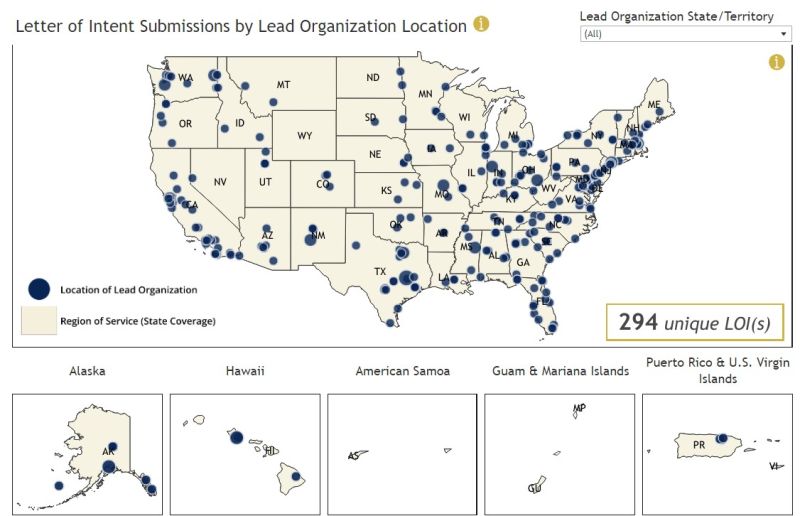NSF publishes data on letters of intent submitted to the NSF Regional Innovation Engines program
Explore the data to collaborate and build a compelling proposal
To foster transparency and teaming nationwide, the U.S. National Science Foundation Regional Innovation Engines (NSF Engines) program published nearly 300 letters of intent (LOIs) spanning every U.S. state and territory, with nearly all 50 states and three U.S. territories leading the submission of at least one LOI. The NSF Engines program, which is charting a new frontier for American innovation under the "CHIPS and Science Act of 2022," encourages proposers to connect and create regional teams accelerating key technologies and addressing pressing societal, regional, national and/or geostrategic challenges.
Explore the interactive map or use the data to find partners on the NSF Engines website.
Under the current NSF Engines funding opportunity, organizations were required to submit LOIs by June 18 with information about how their proposed NSF Engines aim to build partnerships that will advance use-inspired and translational research in key technology areas and address pressing challenges, all the while creating new pathways for the workforce in their regions.
The NSF Engines program requires applicant teams to define their geographic regions of service and lead their application submissions with that information. Applicant teams should know about and connect with others within their regions and topic areas. By publishing the accepted LOIs, NSF aims to provide a mechanism for applicant teams to connect and potentially collaborate before the preliminary proposal deadline on Aug. 6, 2024.
Additionally, the NSF Engines program aims to foster connections between organizations that may not typically work together. Nonprofits, foundations, investors, state and local government officials, tribal governments and community organizations have all expressed interest in connecting with NSF Engines. By publishing LOIs, NSF aims to create opportunities across the U.S. for like-minded groups to connect with submitters (within one's community and beyond) to offer ideas, capital, expertise and more.
Ultimately, the NSF Engines program aims for this process to lead to stronger teams with more diverse sets of partners.
As a leading science and technology agency, NSF holds data transparency paramount. Given other federal, state and local efforts to build regional ecosystems and innovation and workforce capacity, NSF sees value in sharing data early to enable the participation of a diverse set of prospective partners early on in proposal formulation. The agency also encourages users to build tools and visualizations on top of its data.
Preliminary proposals, the next step in the submission process, are due by Aug. 6, 2024.
About NSF Engines
Launched by the NSF Directorate for Technology, Innovation and Partnerships, the NSF Engines program envisions fostering multiple flourishing regional innovation ecosystems across the country, providing a unique opportunity to spur economic growth in regions that have not fully participated in the technology boom of the past few decades. Each NSF Engine catalyzes robust partnerships rooted in scientific and technological innovation to positively impact the economy within a geographic region, address societal challenges and advance national competitiveness. For the latest NSF Engines information, subscribe to the email list.

